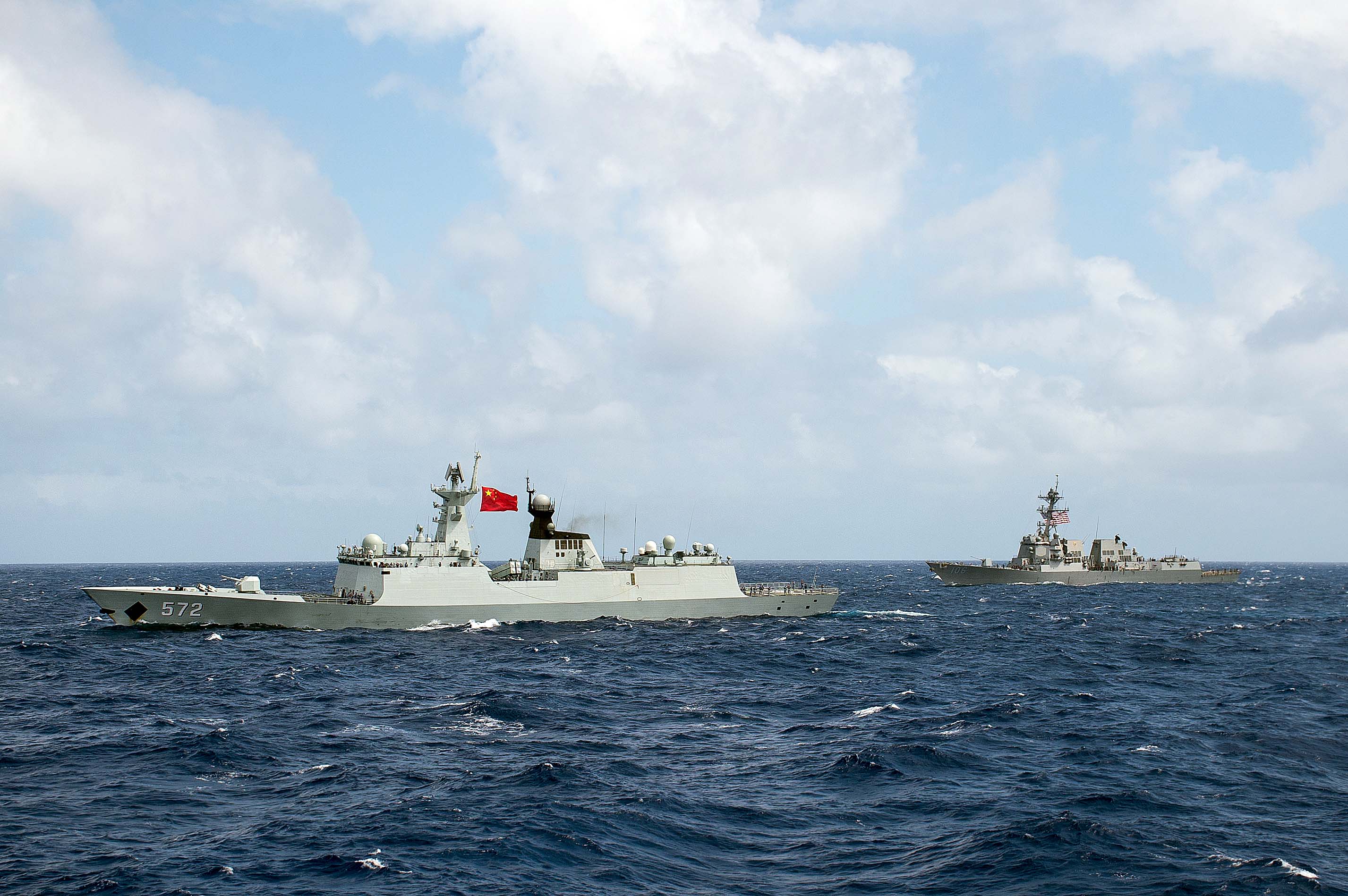
The U.S. military has disinvited China from participating in the upcoming Rim of the Pacific exercise in Hawaii, a Defense Department spokesman announced.
Citing actions in the South China Sea that run counter to international norms and a pursuit of free and open seas, Department of Defense spokesman Marine Lt. Col. Christopher Logan said the People’s Liberation Army Navy (PLAN) would not be participating in the exercise despite its participation in submarine safety and other non-warfighting components of the exercise in previous years.
“The United States is committed to a free and open Indo-Pacific. China’s continued militarization of disputed features in the South China Sea only serve to raise tensions and destabilize the region. As an initial response to China’s continued militarization of the South China Sea we have disinvited the PLA Navy from the 2018 Rim of the Pacific (RIMPAC) Exercise. China’s behavior is inconsistent with the principles and purposes of the RIMPAC exercise,” Logan said.
“We have strong evidence that China has deployed anti-ship missiles, surface-to-air missile (SAM) systems, and electronic jammers to contested features in the Spratly Islands region of the South China Sea. China’s landing of bomber aircraft at Woody Island has also raised tensions,” he continued.
“We believe these recent deployments and the continued militarization of these features is a violation of the promise that President Xi made to the United States and the World not to militarize the Spratly Islands.”
U.S. 3rd Fleet spokeswoman Lt. Cmdr. Julie Holland told USNI News that China had been scheduled to be part of the Combined Task Force (CTF) 175, led by U.S. Coast Guard Cutter Bertholf (WMSL-750) and joined by ships from several nations’ navies, as well as in CTF 171, led by U.S. naval expeditionary dive and salvage forces. PLAN would have brought four ships total, including its hospital ship Peace Ark, as well as a salvage diving team.
China participated in the 2016 exercise despite tensions at the time. Then-Defense Secretary Ash Carter said in April 2016, “Our approach to security in the region, as I indicated there, has always been to try to include everyone, so that’s our basic approach. So even as we stand strong and improve all of our systems and stand strong with our allies – and develop new partnerships with countries like India and Vietnam that we don’t have decades of experience with, like the Philippines; they’re all coming to us, in part because they’re concerned about China – but we’re still taking the approach of, everybody ought to work together here. So if the Chinese want to participate, I think it’s the right place for us to be. Come on, and instead of standing apart from everybody and isolating yourself and excluding yourself, try to be part of the system of cooperative nations that have made, as I said, the Asian miracle possible.”
In 2012 China was invited to participate in the 2014 exercise – where the PLAN sent four invited ships and one uninvited spy ship – and soon afterwards the U.S. invited China to rejoin them again in 2016. Despite South China Sea tensions and other friction between the two countries, naval leaders have long spoke of the importance of rehearsing humanitarian assistance and disaster relief drills together, communicating at sea to avoid collisions, and practicing safe ship handling and rescue drills in case of an emergency.
Russia, however, was not allowed to participate in 2016 due to its annexation of Crimea and aggression in Eastern Ukraine. Still, the Russian Navy sent a destroyer to follow USS America (LHA-6) and a spy ship to monitor the exercise.
The following is the complete statement by Defense Department spokesman Lt. Col. Christopher Logan:
“The United States is committed to a free and open Indo-Pacific. China’s continued militarization of disputed features in the South China Sea only serve to raise tensions and destabilize the region. As an initial response to China’s continued militarization of the South China Sea we have disinvited the PLA Navy from the 2018 Rim of the Pacific (RIMPAC) Exercise. China’s behavior is inconsistent with the principles and purposes of the RIMPAC exercise.”
“We have strong evidence that China has deployed anti-ship missiles, surface-to-air missile (SAM) systems, and electronic jammers to contested features in the Spratly Islands region of the South China Sea. China’s landing of bomber aircraft at Woody Island has also raised tensions.”
“While China has maintained that the construction of the islands is to ensure safety at sea, navigation assistance, search and rescue, fisheries protection, and other non-military functions the placement of these weapon systems is only for military use.”
“We have called on China to remove the military systems immediately and to reverse course on the militarization of disputed South China Sea features.”
“We believe these recent deployments and the continued militarization of these features is a violation of the promise that President Xi made to the United States and the World not to militarize the Spratly Islands.”





